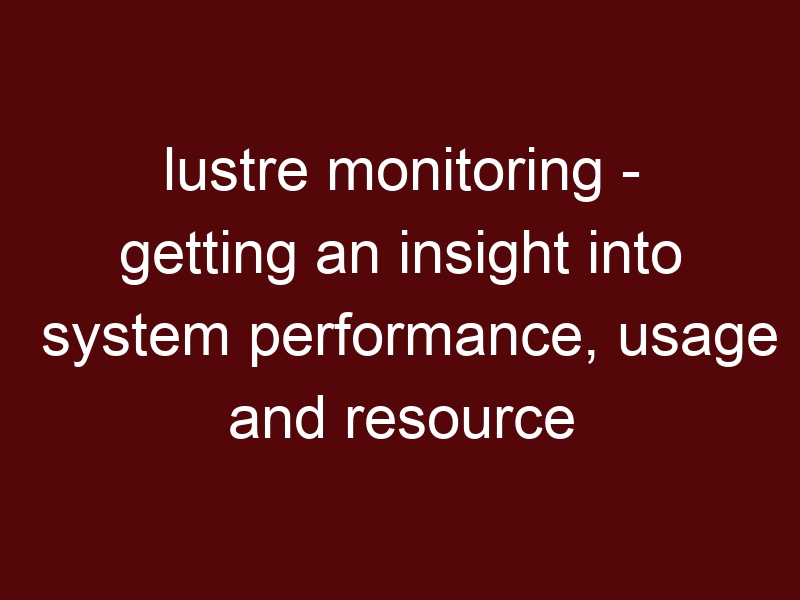Monitoring Lustre is essential to ensure optimal system performance, detect potential issues, and troubleshoot problems proactively. Several tools and approaches can be used to monitor Lustre and gain insights into system performance, usage, and resource utilization. Here are some commonly used methods and tools for Lustre monitoring:
- Lustre Stats: Lustre provides a set of statistics (statistics procfs) that can be accessed through the
/proc/fs/lustredirectory on the MDS and OSS nodes. These statistics provide valuable information about Lustre operations, client activity, network performance, and more. - LFS Top: LFS Top is a Lustre-specific command-line tool that displays real-time statistics for Lustre file systems. It provides a summary of Lustre performance metrics, including client operations, network activity, and OST performance.
- Lustre Health Monitoring (LHM): Lustre Health Monitoring is a framework that continuously checks the health of the Lustre file system and its components. LHM provides scripts to check Lustre status, diagnose issues, and generate reports on system health.
- Lustre Performance Analysis (LPA): Lustre Performance Analysis is a tool that analyzes Lustre performance data collected over a period of time. It helps identify performance bottlenecks and provides detailed insights into Lustre performance.
- Ganglia: Ganglia is a popular open-source monitoring and visualization system used in many HPC environments. It can be integrated with Lustre to collect Lustre performance data and provide real-time monitoring and historical analysis.
- Prometheus and Grafana: Prometheus is a powerful monitoring and alerting toolkit, and Grafana is a visualization tool used to create dashboards. By integrating Lustre with Prometheus and Grafana, you can collect Lustre metrics and create customized dashboards to monitor Lustre performance.
- SAR (System Activity Reporter): SAR is a system monitoring tool that comes with most Unix-like operating systems. It can be used to collect system-level performance data, including disk I/O, CPU usage, and network activity, which can provide insights into Lustre performance.
- Nagios: Nagios is a popular open-source monitoring system used for network and infrastructure monitoring. It can be extended with plugins to monitor Lustre-specific metrics and set up alerts for critical events.
- Zabbix: Zabbix is another open-source monitoring tool that can be used to monitor Lustre systems. It provides a web-based interface for visualization and alerting based on defined thresholds.
When monitoring Lustre, it’s essential to collect relevant performance data, analyze it regularly, and set up alerts to be notified of potential issues. A combination of Lustre-specific tools and general-purpose monitoring solutions can help ensure a robust and efficient Lustre file system in HPC and large-scale storage environments.





